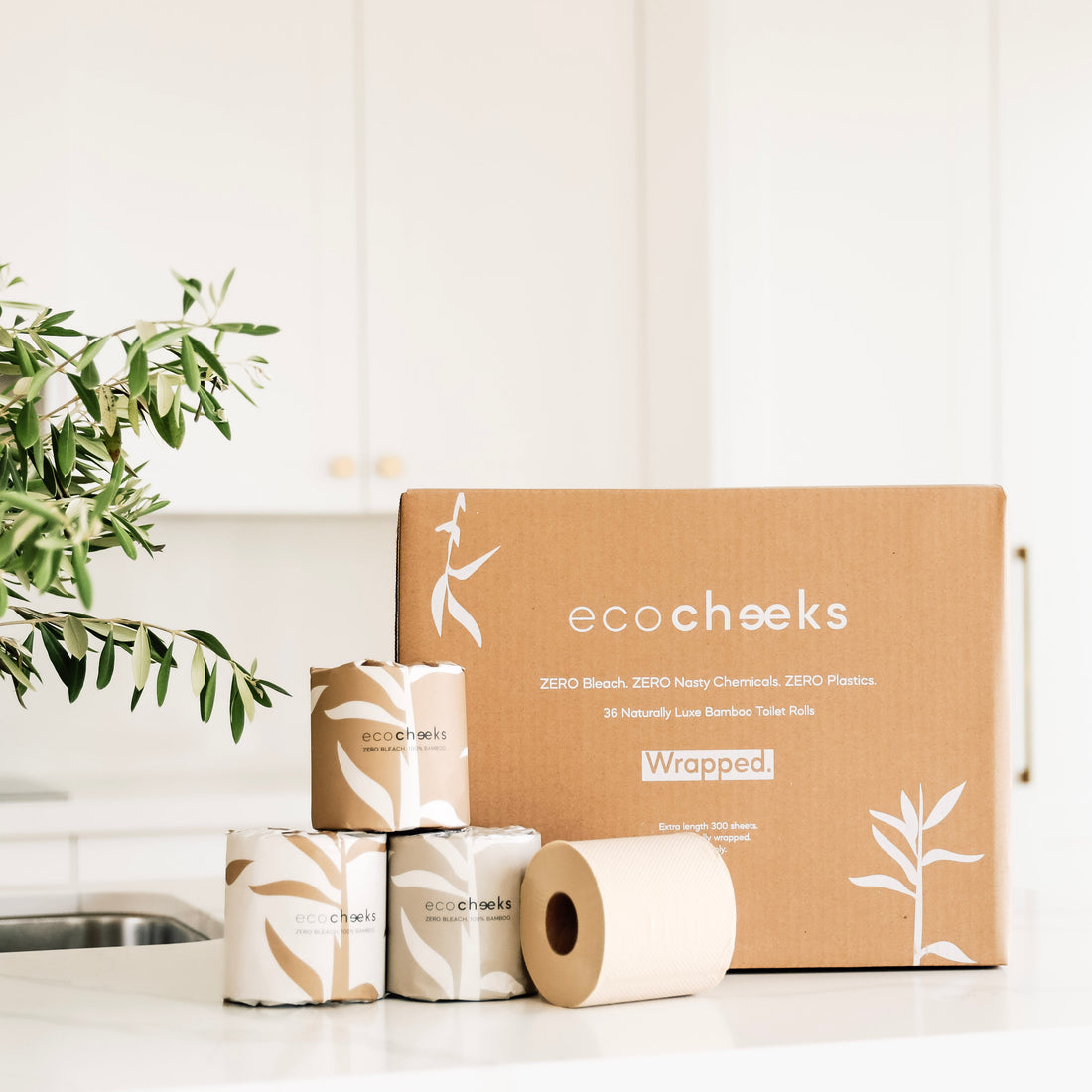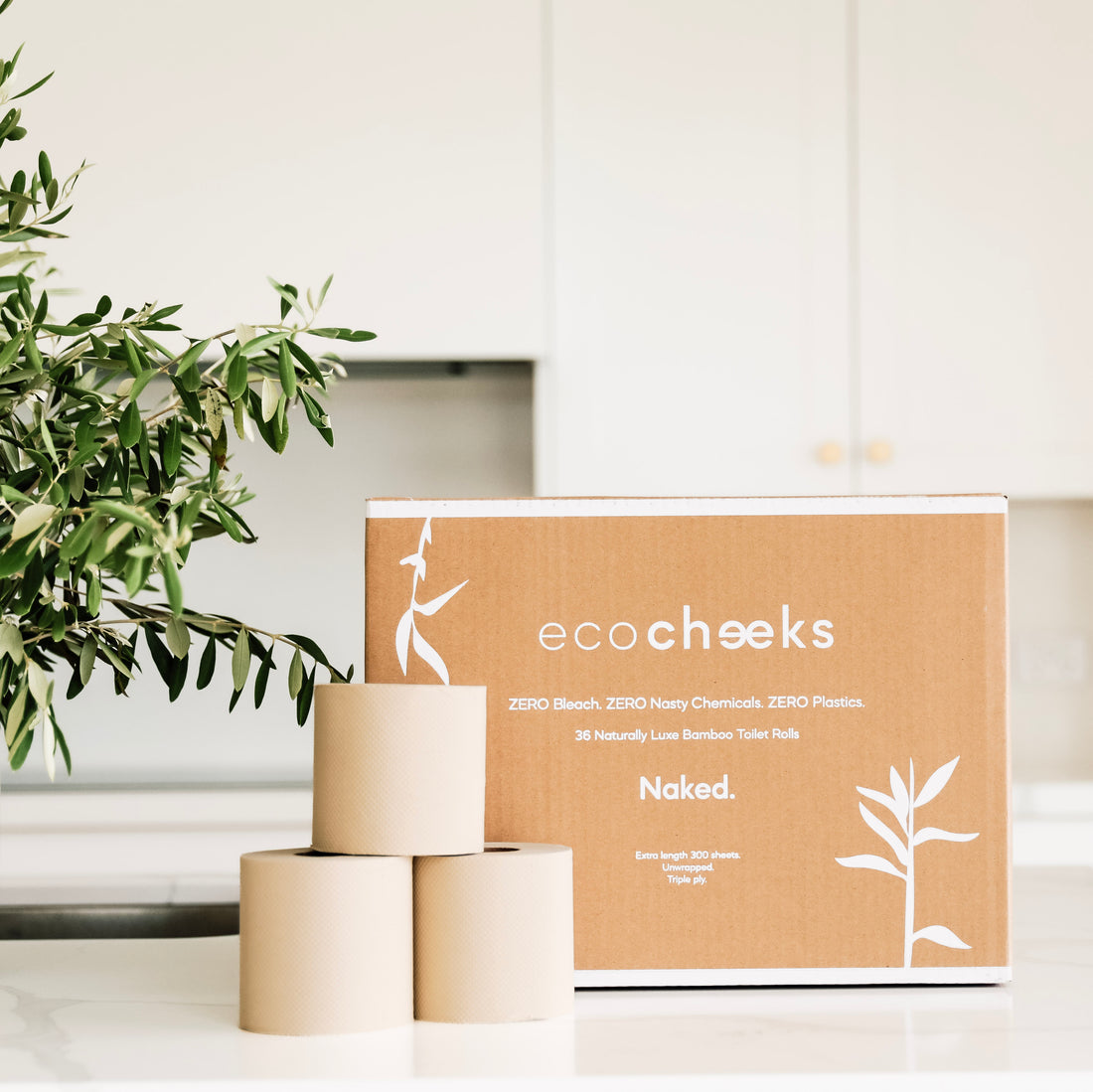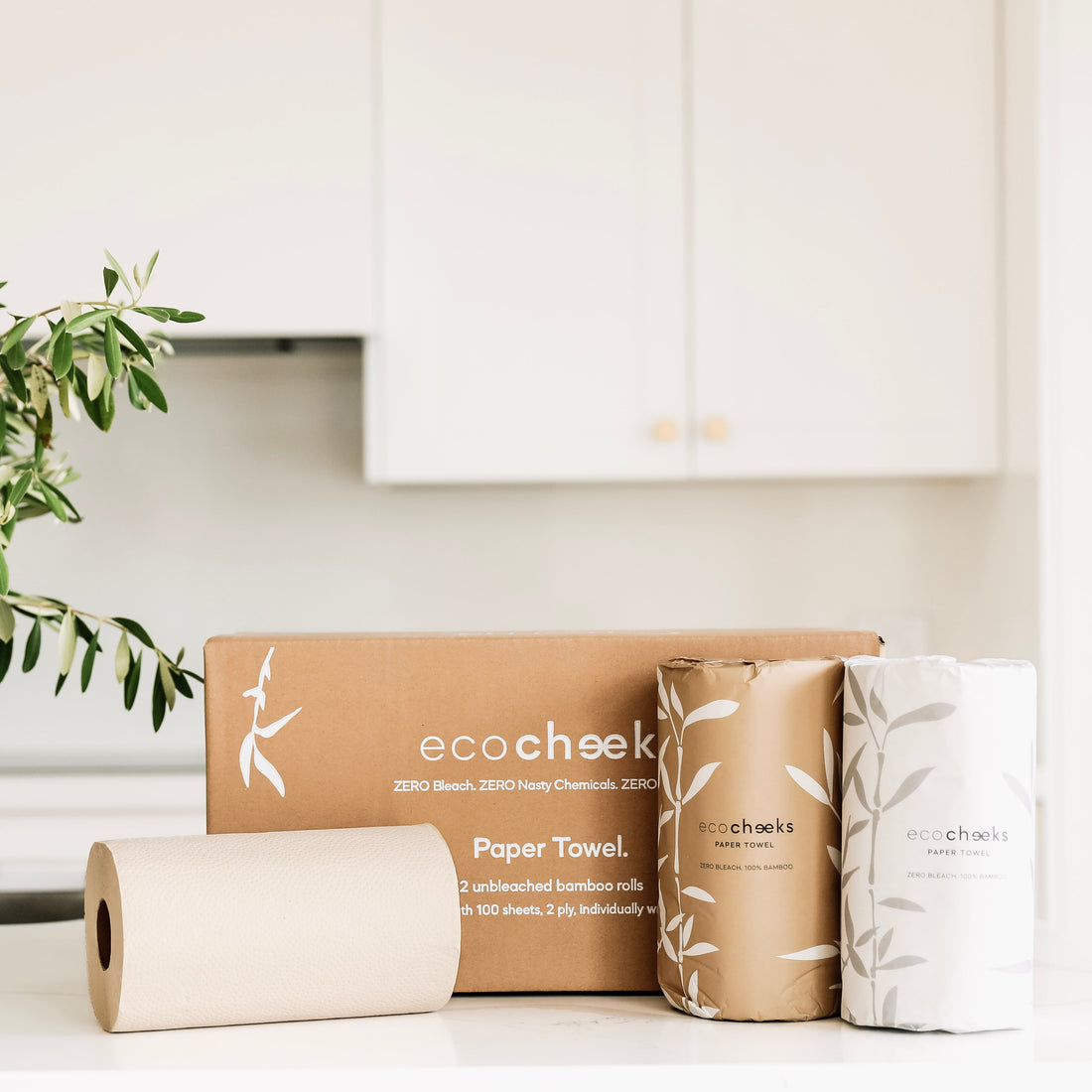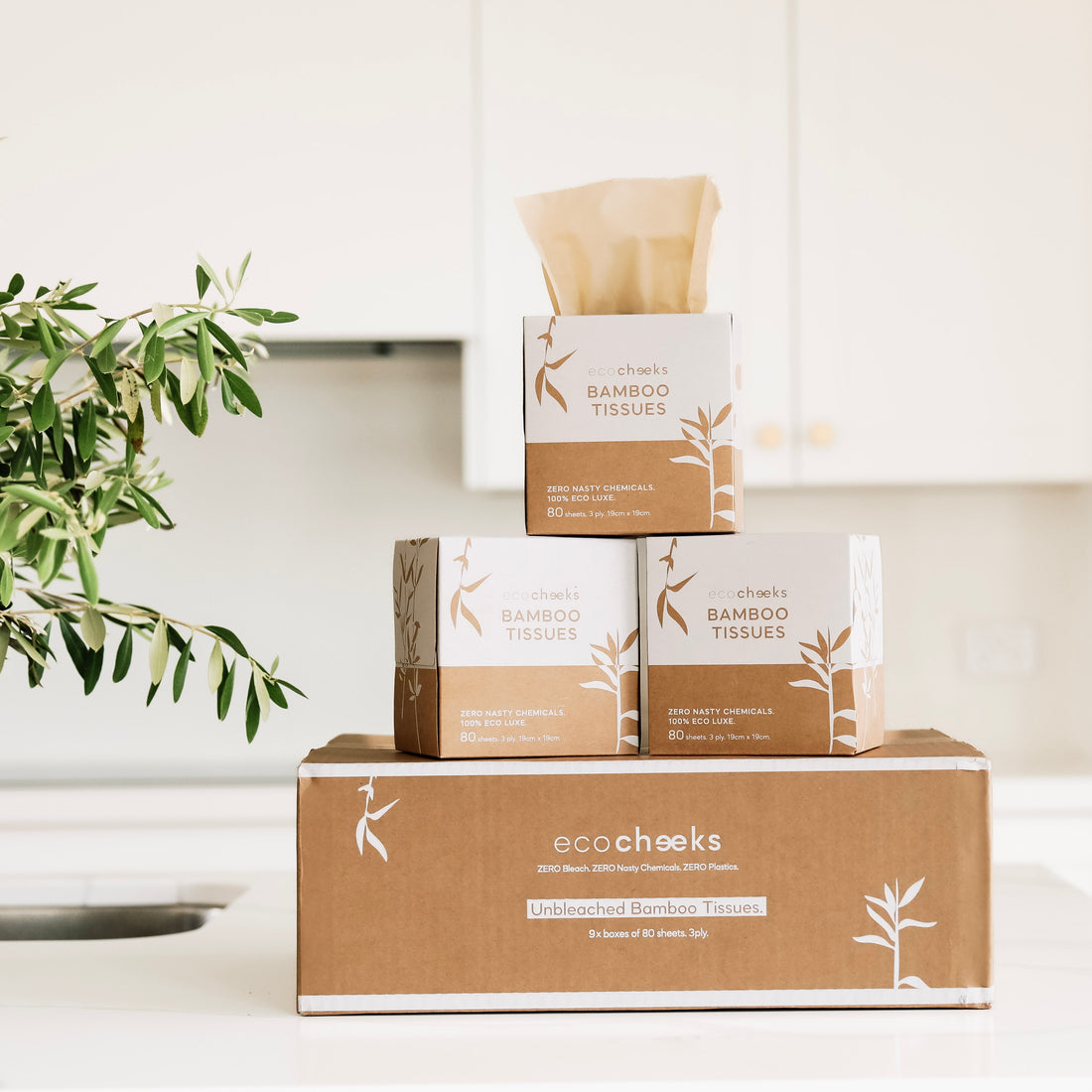If you’ve ever stood in the laundry aisle scratching your head at the plastic bottles and overpowering synthetic fragrances, you’re not alone. A couple of years ago, we put together a quick Instagram reel showing our favourite Eco Laundry Swaps and it really struck a chord.
🎥 Watch our Eco Laundry Swaps Reel
But let’s be honest 90 seconds on Instagram barely scratches the surface. So we’re giving those tips the full blog treatment! Whether you're just starting your low-tox journey or already a seasoned eco-swapper, here are 7 easy changes to make your sustainable laundry routine better for you and the planet.
1. Ditch the Detergent Bottles – Go for DIY, Sheets or Powders
Most mainstream detergents come in giant plastic bottles filled with synthetic chemicals and artificial scents. They're heavy to carry, tricky to store, and tough on the environment.
The swap? Try plastic-free options like DIY, laundry detergent sheets or concentrated powders that come in cardboard box. These natural laundry alternatives are lightweight, space-saving, and much gentler on your skin and the earth. Brands like Tru Earth, Zero Co., or Eco Store offer great alternatives.
They're also greywater safe and biodegradable so you’re not washing pollutants into our waterways as part of your sustainable laundry routine.
2. Say Goodbye to Fabric Softener – Try Vinegar or Wool Dryer Balls
Conventional fabric softeners might leave your clothes feeling fluffy, but they’re usually full of phthalates and synthetic chemicals that linger on your skin.

The swap? Use white vinegar as a natural softener, about ¼ cup per rinse cycle. It breaks down detergent residue and leaves your clothes soft (promise, they won’t smell like vinegar).
For the dryer, wool dryer balls are a game-changer. They cut drying time, reduce static, and you can add a few drops of essential oil for a natural laundry alternative fragrance.
3. Swap Plastic Pegs for Stainless Steel or Wooden Ones
Plastic pegs are brittle, especially under the Aussie sun. And when they snap, they often break down into microplastics.
The swap? Choose stainless steel pegs (they last a lifetime) or wooden pegs from sustainably sourced timber. They hold up better in the elements and won’t shed plastic every time you hang your laundry.
Store them in a breathable peg bag to extend their life even more. It’s a simple eco laundry swap that goes a long way.
4. Choose Natural Fibre Laundry Bags Over Plastic Mesh
Nylon and polyester laundry bags might protect your delicates, but they also shed microplastics with every wash.

The swap? Try cotton or hemp laundry bags instead. These natural laundry alternatives are biodegradable and just as effective at protecting your bras and delicates.
For synthetic clothing, consider a Guppyfriend bag, it captures microfibres during washing, stopping them from entering our waterways.
5. Upgrade to a Microfibre Filter for Your Washing Machine
Microplastics are one of the biggest hidden threats to our environment and your washing machine could be contributing.
The swap? Install a microfibre filter like PlanetCare or Filtrol. These attach to your machine and trap microscopic fibres shed from synthetic fabrics like activewear.
It’s one of the most impactful eco laundry swaps for families who wear synthetics regularly and want to keep their sustainable laundry routine truly low-impact.
6. Use Cold Water Washes – Save Energy, Save Clothes
Did you know that up to 90% of the energy used by your washing machine goes into heating the water?
The swap? Use cold water cycles for everyday loads. It uses less energy, helps your clothes last longer, and saves on bills. Unless your clothes are heavily soiled, cold water works just fine.
Bonus tip: Wash full loads and air dry when possible. It’s better for your energy use, your wardrobe, and the environment.
7. Choose Low-Tox, Refillable or Plastic-Free Stain Removers
Stain removers often come in plastic packaging and are loaded with strong, harsh chemicals. They work, sure but they’re not always kind to skin or planet.
The swap? Choose solid stain remover bars or low-tox pastes. Brands like That Red House, Ethique, Ecostore, and Kin Kin Naturals make biodegradable, septic-safe, and plastic-free options.
You can also go DIY: mix bicarb soda with water or castile soap for a quick natural laundry alternative. A bit of sunshine does wonders too!
Bonus Eco Laundry Tips
Because we couldn’t stop at just seven…
-
Avoid over-washing. If it’s not dirty or smelly, let it air out instead.
-
Buy clothes made from natural fibres like cotton, bamboo, or hemp to reduce microplastic shedding.
-
Use eco mode on your washing machine for better water and energy efficiency.
-
Recycle responsibly. Check your area for recycling programs or TerraCycle drop-off points for old pegs, detergent containers, or mesh bags.
Why These Laundry Swaps Matter
The average Aussie household does 4–5 loads of laundry each week that’s hundreds of litres of water, detergent, and energy every month. Your laundry habits really do add up.
By switching to eco laundry swaps, you reduce waste, protect waterways, and avoid exposing your household to unnecessary chemicals. Plus, you’re supporting brands and habits that fit your sustainable laundry routine and lifestyle.
Final Spin
Choosing natural laundry alternatives doesn’t mean giving up performance or convenience. It means finding smarter, safer, more planet-friendly ways to clean your clothes, one load at a time.

Whether you start with detergent sheets, wool dryer balls, or a microfibre filter, every change matters.
💚 Don’t forget to tag us on Instagram @ecocheeks if you try any of these! We’d love to see your eco laundry swaps in action.









1 comment
All great tips I’ve been doing a lot of these for a few years.
Last year I started using For All laundry detergent and cleanser. An Aussie cy with a fantastic product. The only thing I’m not crazy about is the waffle cloths which are made out of recycled plastic. They work great tho. Thanks for listening!